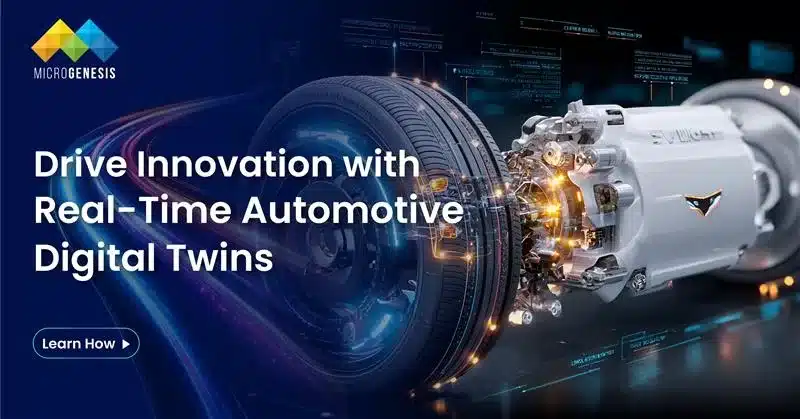In today’s rapidly evolving engineering landscape, the complexity of systems is increasing exponentially. Industries such as aerospace, automotive, healthcare, and defense are witnessing unprecedented integration of software, hardware, and communication technologies. In such a scenario, traditional document-centric approaches to systems engineering are becoming inadequate, leading to inefficiencies, communication gaps, and high chances of errors. The solution? A shift to Model-Centric Engineering (MCE).
This transition from a document-centric to a model-centric approach is revolutionizing the way systems are designed, analyzed, and validated. Model-Based Systems Engineering (MBSE), a core element of MCE, enables engineers to create, visualize, and simulate complex systems using a unified model that is continuously updated and shared among all stakeholders. In this blog, we will explore the key benefits of transitioning to model-centric engineering, how MBSE drives this transformation, and real-world examples of industries leading this change.
Understanding Document-Centric Engineering
In a document-centric approach, the primary mode of communication, design, and analysis revolves around documents—be it specifications, diagrams, test plans, or manuals. Engineers and teams rely on numerous, often fragmented, documents to represent different aspects of the system. These documents may be spreadsheets, informal diagrams, or large textual reports that are updated manually and shared across departments.
While this method has worked for many years, its limitations are becoming more apparent with increasing system complexity:
- Siloed Information: Different teams work on separate documents, which can lead to miscommunication and duplication of effort. The integration of these documents becomes a challenge.
- Lack of Traceability: It is difficult to trace the evolution of a requirement or design element across multiple documents, leading to discrepancies and oversight in changes.
- High Maintenance: Manually updating documents to reflect changes in the design can be time-consuming and error-prone.
- Difficult to Scale: As systems grow in complexity, managing large volumes of documentation becomes unsustainable, leading to potential delays and increased costs.
What is Model-Centric Engineering?
Model-Centric Engineering represents a paradigm shift where models—not documents—are the central artifact used for design, analysis, and communication. In MCE, all system components, behaviors, requirements, and interactions are captured within a unified, integrated model. This model serves as the single source of truth, enabling real-time collaboration and ensuring that all stakeholders—engineers, designers, project managers—work from the same, up-to-date information.
A key element of this approach is Model-Based Systems Engineering (MBSE), which facilitates the use of formalized models to manage complex system development across the lifecycle. In MBSE, engineers develop system models that evolve and expand as the project progresses, allowing teams to test and validate components virtually before they are physically built.
Why Transition to Model-Centric Engineering?
Transitioning from a document-centric to a model-centric approach offers numerous benefits, addressing many of the challenges posed by traditional methods.
1. Enhanced Collaboration and Communication
In a model-centric environment, all stakeholders work from a common, shared model. This promotes collaboration across different departments, such as mechanical engineering, software development, and testing. As the model is continuously updated, everyone has access to the latest information, minimizing miscommunication and the risk of design conflicts.
For example, in the automotive industry, when developing a new vehicle, different teams work on the engine, braking system, and user interface. With MCE, all these components are represented in a single model, allowing teams to see how changes in one area affect others, facilitating smoother cross-functional collaboration.
2. Improved Traceability and Transparency
One of the major drawbacks of document-centric engineering is the difficulty in tracing changes. With a model-centric approach, traceability is built-in. Every change, from requirements to design modifications, is automatically tracked and recorded in the model. Engineers can trace requirements back to their origins, design decisions, and even testing results.
For industries such as medical device development, where regulatory compliance is strict, MCE ensures that every requirement and design element is traceable, making audits and regulatory submissions smoother and more efficient.
3. Early Detection of Issues Through Simulation
Model-centric engineering allows teams to simulate the system before physical prototypes are built. This means engineers can validate different components and detect issues early in the design phase, saving time and resources. Virtual simulations also enable engineers to test multiple design alternatives and optimize the system’s performance before finalizing decisions.
In the aerospace industry, for instance, creating and testing physical prototypes can be costly and time-consuming. Using MCE, engineers can simulate flight conditions, mechanical stresses, and software interactions within a single model, allowing for thorough testing before any physical components are built.
4. Reduced Time-to-Market
With enhanced collaboration, early issue detection, and automated traceability, transitioning to MCE leads to a more streamlined development process. This reduces the time it takes to bring new products to market. Since teams work from a shared, accurate model, they spend less time on manual updates and more time on innovation and testing.
This is especially beneficial for industries such as consumer electronics, where staying ahead of competitors with fast product cycles is crucial.
5. Scalability for Complex Systems
As systems grow in complexity, managing them through documents becomes increasingly difficult. MCE, on the other hand, is designed to handle complex, interdependent systems. It scales effectively, allowing organizations to manage even the most intricate projects with multiple subsystems, varying requirements, and extensive testing needs.
For example, in the development of smart cities, MCE enables the integration of multiple systems (e.g., traffic management, energy distribution, and water supply) into a unified model, ensuring that interactions between these systems are understood and managed from the earliest design stages.
Also Read: Key Tools and Platforms for MBSE: A Comprehensive Comparison
The Role of MBSE in Model-Centric Engineering
Model-Based Systems Engineering (MBSE) is a key enabler of MCE. It provides the tools, methodologies, and frameworks to transition from document-centric engineering to a model-driven approach.
1. Requirements Modeling
In MBSE, requirements are modeled rather than written in documents. This allows for clearer communication between stakeholders and ensures that every requirement is directly tied to a specific part of the system model. As requirements evolve, the model automatically updates, ensuring that no design elements are overlooked.
2. Behavior and Structure Modeling
MBSE enables teams to model both the behavior and structure of a system. Behavior models show how the system is expected to function under different conditions, while structure models represent the physical and logical arrangement of system components. This dual modeling approach ensures that all aspects of the system are covered.
3. Continuous Validation and Verification
One of the greatest strengths of MBSE is its ability to provide continuous validation and verification of the system model. As the system evolves, engineers can run simulations, check for errors, and verify that all requirements are being met. This reduces the need for manual testing and ensures that the system is always in compliance with specifications.
Industries Leading the Transition to Model-Centric Engineering
Several industries are already leading the way in adopting model-centric engineering, seeing the benefits of MBSE in action.
1. Automotive
The automotive industry is at the forefront of transitioning to MCE, particularly in the development of autonomous vehicles. With thousands of sensors, software systems, and mechanical components to integrate, a model-driven approach ensures that all aspects of the vehicle work together seamlessly.
2. Aerospace
Aerospace companies are leveraging MCE to develop advanced aircraft, space exploration systems, and defense technologies. By using MBSE, they can simulate complex flight conditions, test software and hardware integration, and ensure the highest levels of safety and reliability.
3. Healthcare
In the healthcare sector, especially in medical device development, MCE is enabling manufacturers to design safer, more reliable devices. By modeling and simulating devices before they are physically built, engineers can ensure compliance with strict regulatory requirements and improve patient outcomes.
4. Defense
The defense industry relies on MCE to manage the development of complex, mission-critical systems. MBSE provides traceability, scalability, and security, ensuring that systems perform as expected in high-stakes environments.
Challenges of Transitioning to Model-Centric Engineering
While the benefits of MCE are clear, transitioning from a document-centric to a model-centric approach comes with its challenges:
- Cultural Shift: Engineering teams that are accustomed to working with documents may be resistant to adopting new tools and workflows.
- Learning Curve: Implementing MBSE and MCE requires teams to learn new methodologies and tools, which may initially slow down development.
- Tool Integration: Ensuring that all teams have access to compatible tools and platforms is essential for a successful transition.
Conclusion: Embracing the Future of Engineering with MBSE
The shift from document-centric to model-centric engineering is not just a trend but a necessity in today’s increasingly complex engineering landscape. Model-Based Systems Engineering (MBSE) is the driving force behind this transformation, enabling organizations to design, simulate, and validate systems with unprecedented efficiency and accuracy.
MicroGenesis, recognized as a Best IT Company, is at the forefront of this transition, partnered with PTC for Codebeamer ALM and Windchill, offering licensing, consulting, and training services to ensure successful MBSE implementation. With 16+ years of partnership with IBM, we also specialize in implementing IBM ELM tools, helping organizations transition to model-centric engineering and unlock the full potential of MBSE. By adopting a model-centric approach, your organization can stay ahead in the competitive landscape, delivering innovative, high-quality products faster and more efficiently.




